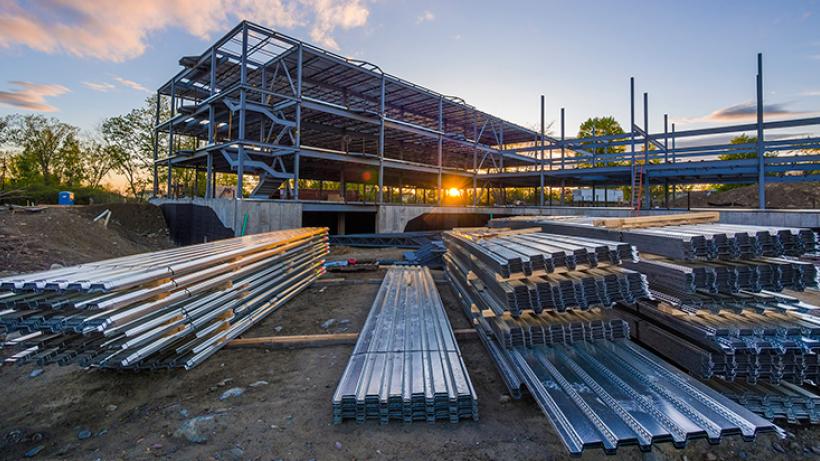
Driving domestic investment: FDI use and source matter
More targeted manufacturing FDI could reinforce and raise domestic investment levels in developing economies.
FDI and the developing world
Foreign direct investment (FDI) is widely viewed as an important source of external financing for developing countries. The Monterrey Consensus of 2002 formalised this view by making FDI one of the six pillars of development finance, embraced by hundreds of officials from both developed and developing countries. Policies targeted at attracting FDI into the developing world increased dramatically since 2002. FDI has become a leading source of external financing for developing countries, second only to remittances (OECD, 2014).
FDI and domestic investment
From a theoretical perspective, the overall effect of FDI on domestic investment and economic growth is ambiguous. Although FDI can add to the stock of domestic capital, competition from FDI may force less competitive domestic firms to close down, thereby reducing overall investment. Indeed, there is a sizeable literature on the effects of inward FDI on domestic investment, which dates back to at least the end of the 1970s (Brecher & Diaz-Alejandro, 1977; Lall and Streeten, 1977).
Although FDI can add to the stock of domestic capital, competition from FDI may force less competitive domestic firms to close down, thereby reducing overall investment.
Does inward FDI stimulate domestic investment in developing countries?
In light of this theoretical ambiguity, careful empirical work that can shed light on the relationship between FDI and domestic investment becomes very important. Empirical work along these lines has been difficult, not least because of data limitations.
Until recently, studies examining the links between FDI and domestic investment have had to rely on aggregate FDI data taken from Balance of Payments (BoP) statistics. But BoP data reflect all financial transfers between parents and subsidiaries of multinational firms. They are therefore typically not an accurate portrayal of ongoing projects and new investments in host economies.
Project level data on FDI at the firm and industry levels make it possible to overcome some of these challenges. Using this data, new research contributes to the long debated issue of whether inward FDI can stimulate domestic investment in developing countries in three ways:
- First, it introduces a novel measure of FDI, based on project-level data by multinational enterprises (MNEs) operating in developing countries. This measure of FDI overcomes previous data limitations on real investment by MNEs and on the presence and weight of foreign firms in host economies.
- Second, it accounts for the possible differential impact of FDI on domestic investments according to:
- Business activities performed by MNEs abroad, distinguishing between manufacturing production and other business activities related to manufacturing (i.e. sales, marketing, client support, retail and wholesale);
- Sources of FDI, distinguishing between investors from advanced and developing economies.
- Third, via greenfield FDI, which by definition is an addition of new foreign capital, unlike mergers and acquisitions (M&A) that represent just a change in the ownership structure of existing firms (Calderon et al., 2004; Ashraf and Herzer, 2014).
FDI and manufacturing in developing countries
The research finds that a one standard deviation increase in the number of foreign firms entering a given country-industry pair raises the ratio of investment to GDP by around 0.018 percentage points; this translates into a 30% increase in the ratio of investment to GDP over its average. This result holds true even when we use the “stock” of foreign companies in the host country as a measure of FDI.
When we separate manufacturing FDI from general trade-related FDI, we note a much stronger relationship between manufacturing FDI and domestic investment levels. In contrast, we find no statistically meaningful relationship between trade-related FDI and domestic investment. This may be because manufacturing FDI is better targeted towards establishing stronger ‘backwards linkages’ between foreign multinational companies and domestic suppliers.
The results are consistent with the idea that production oriented FDI is more likely to generate domestic spillovers in the form of backward and forward linkages which fosters stronger linkages with domestic suppliers (Rodriguez-Clare, 1996). Trade related FDI in contrast, often operates in an enclave with the primary purpose of facilitating international trade, and does not establish local fir linkages. Our results are also consistent with firm level evidence, which documents these forward and backward linkages (Javorcik, 2004). This evidence is supportive of a policy focus on attracting FDI in the manufacturing sector into developing countries.
The evidence also suggests that there is a stronger effect on total investment from FDI flows that originate from firms in more advanced economies, compared to FDI flows from less advanced economies. However this may be because Southern investors only recently entered FDI markets and face stronger direct competition from domestic firms. At present, the flows of FDI from less developed economies still represent a small proportion of total FDI flows.
Production oriented FDI is more likely to generate domestic spillovers in the form of backward and forward linkages than trade-related FDI.
FDI and domestic spill-overs
Although policies designed to attract FDI are now widespread in the developing world, they are largely unconditional on the actual activities performed by MNEs. However, the results fall short of a justification for subsidies to foreign investors. This is because the data are too aggregate to be able to identify knowledge or other domestic spill overs from FDI that are not mediated by the market. For these purposes, researchers must use firm level data to quantify the magnitude of the true spill-overs associated with FDI.
References:
Ashraf, A. and Herzer, D. 2014. ‘The effects of greenfield investment and M&As on domestic investment in developing countries’. Applied Economics Letters, 21(14): 997-1000.
Brecher, R.A. & Diaz-Alejandro, C.F. 1977. ‘Tariffs, foreign capital and immiserizing growth’. Journal of International Economics, Elsevier, vol. 7(4): 317-322, November.
Calderon, C.; Loayza, N. and Serven, L. 2004. Greenfield Foreign Direct Investment and Mergers and Acquisitions: Feedback and Macroeconomic Effects. World Bank Policy Research Working Paper 3192.
Lall, S. and Streeten, P. 1977. Foreign Investment, Transnationals and Developing Countries. London: MacMillan.
OECD. 2014. Development Co-operation Report 2014 - Mobilising Resources for Sustainable Development. Paris: OECD.
Rodriguez-Clare, Andres. "Multinationals, linkages, and economic development." The American Economic Review (1996): 852-873.
Javorcik, S. (2004). ‘Does foreign direct investment increase the productivity of domestic firms? In search of spillovers through backward linkages’. The American Economic Review 94.3 (2004): 605-627.


